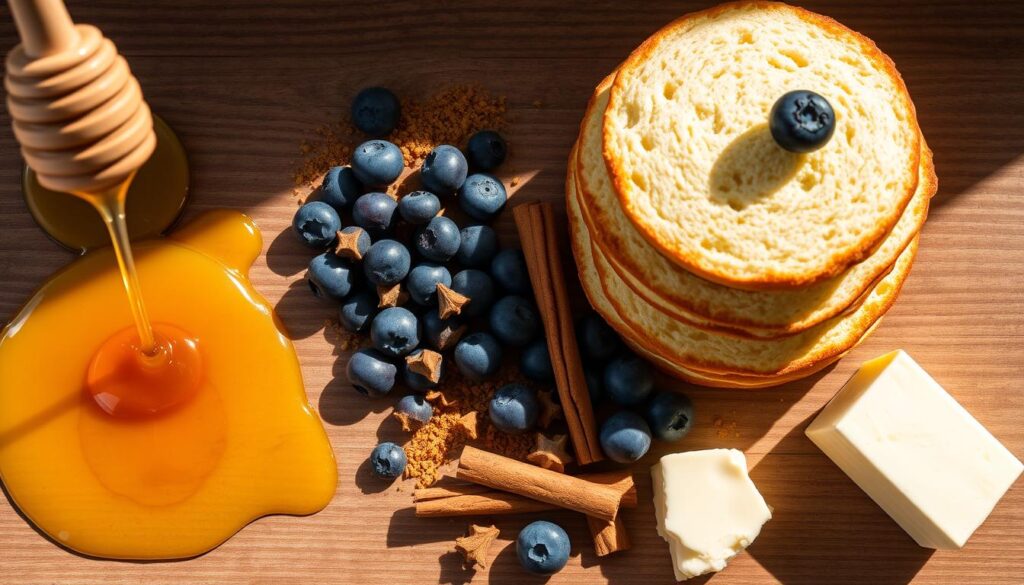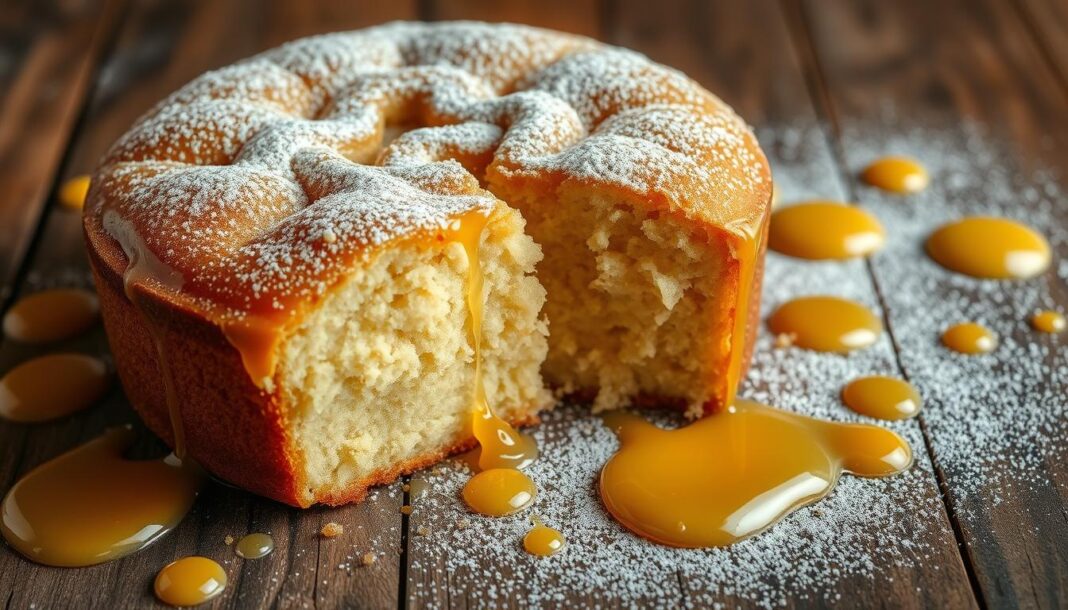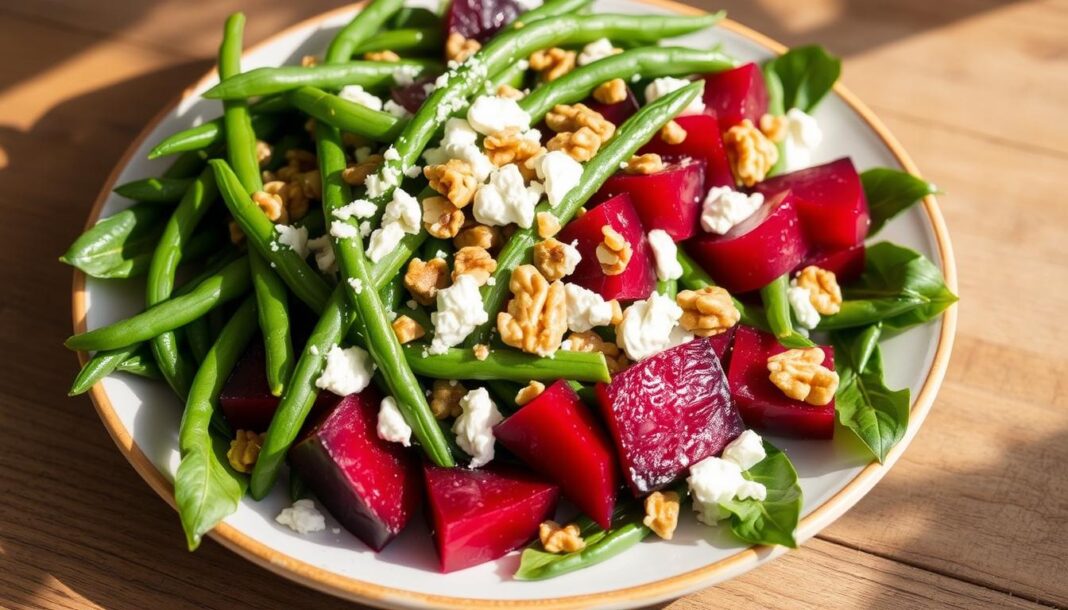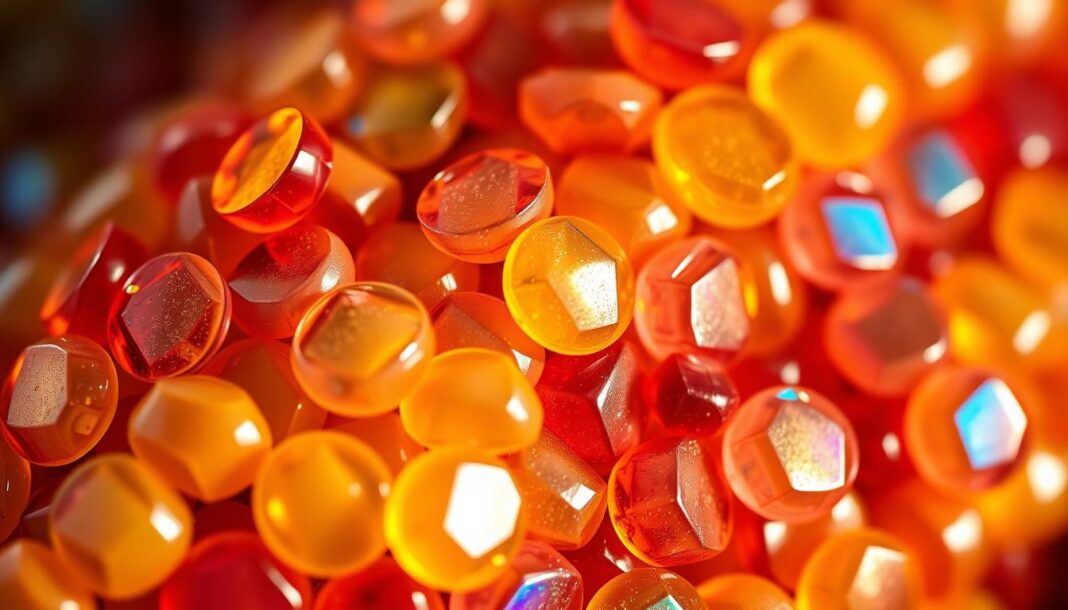At Historical Foods, we’ve spent years perfecting our honey cake recipe, and we’re excited to share it with you. Our time-tested method ensures that every batch turns out deliciously moist and flavorful, with a perfect balance of sweetness.
The secret to our honeycakes lies in the quality of the ingredients and the technique. We use high-quality honey to give our cake a rich, distinct flavor. The result is a cake that’s not only delicious but also has a tender crumb and a slight crispness on the outside.
Our comprehensive guide will walk you through every step, from selecting the finest ingredients to serving suggestions. Whether you’re a seasoned baker or just starting out, you’ll find that this recipe is easy to follow and requires no special equipment.
Key Takeaways
- Our honey cake recipe yields consistently delicious results.
- The perfect balance of sweetness and moisture is achieved through high-quality ingredients and technique.
- The recipe is accessible to bakers of all skill levels, requiring no special equipment.
- A rich, distinct honey flavor is the hallmark of our honeycakes.
- Our guide provides detailed explanations and serving suggestions.
The Magic of Honeycakes
At the heart of every honeycake is the warmth of honey, blended with precision and care. Honeycakes have a deep, rich honey flavor and a wonderfully tender texture. They’re sweetened entirely with pure honey—no added sugar needed.

What Makes Honeycakes Special
The natural properties of honey create a unique moisture retention in the cake, resulting in that signature tender crumb. The complex flavor profile that develops when honey is baked creates depth beyond simple sweetness. This characteristic makes honeycakes a beloved treat across different cultures and traditions.
Our Testing Process
We conducted extensive testing to perfect our honeycakes recipe, examining variables such as honey types, flour ratios, and baking temperatures. Our methodology focused on texture, flavor intensity, and shelf stability. The key breakthrough moments in our recipe development led to this definitive version.
| Variable | Tested Options | Outcome |
|---|---|---|
| Honey Types | Clover, Manuka, Wildflower | Manuka honey provided the best flavor depth |
| Flour Ratios | All-purpose, Bread Flour, Cake Flour | Cake flour resulted in the tenderest crumb |
| Baking Temperatures | 325°F, 350°F, 375°F | 350°F yielded the perfect balance of moisture and structure |
Essential Ingredients for Perfect Honeycakes Recipe
To achieve the perfect honeycakes, it’s crucial to start with the right ingredients and understand their roles. The quality and combination of these ingredients significantly impact the final product’s flavor, texture, and overall quality.
The Role of Honey in Your Cake
Honey is the star ingredient in our honeycakes recipe, serving as the sole sweetener and contributing to the cake’s moisture and flavor profile. The quality and variety of honey you choose dramatically affect the final flavor of your honeycakes. For instance, a high-quality honey can add a rich, complex flavor, while a lower quality honey might result in a less flavorful cake. Honey also plays a scientific role in the cake’s structure, affecting gluten development and providing both moisture and sweetness.

Dry Ingredients
The dry ingredients in our recipe include all-purpose flour, cornstarch, baking powder, baking soda, salt, and ground cinnamon. The combination of all-purpose flour and cornstarch creates the ideal texture for honeycakes, with the cornstarch helping to reduce the flour’s gluten content, resulting in a tender crumb. Proper measuring techniques for these dry ingredients are crucial to ensure consistent results.
| Ingredient | Measurement | Purpose |
|---|---|---|
| All-purpose Flour | 2 cups | Provides structure |
| Cornstarch | 1/2 cup | Reduces gluten content |
| Baking Powder | 1 teaspoon | Leavening agent |
| Baking Soda | 1/2 teaspoon | Leavening agent |
| Salt | 1/4 teaspoon | Enhances flavor |
| Ground Cinnamon | 1/2 teaspoon | Adds warmth and depth |
Wet Ingredients
The wet ingredients complement the honey, adding richness and moisture to the cake. These include butter, oil, vanilla, eggs, and milk. The fat content from the butter and oil affects the cake’s richness, while the eggs provide structure and the milk adds moisture. Using room temperature ingredients is essential for proper emulsification and texture development. The 1 cup honey used in the recipe not only sweetens the cake but also contributes to its moist texture.
By understanding the roles of these essential ingredients, you can better appreciate the complexity and care that goes into crafting the perfect honeycakes recipe.
Step-by-Step Baking Instructions
Baking the perfect honeycake requires attention to detail, starting with preparing your equipment. To achieve the best results, follow our detailed guide.
Preparing Your Baking Equipment
Before you begin, preheat your oven to 350°F (180°C). Ensure you have the right pan for the job; a properly greased and floured pan is crucial for preventing your honeycake from sticking. Take a moment to set aside any utensils you’ll need, such as a mixing bowl and measuring spoons.

Mixing the Batter
Combine dry ingredients in one bowl and wet ingredients in another. Heat the milk and honey together until it’s hot to the touch. This step is crucial for creating the distinctive texture of honeycakes. Once heated, add this mixture to the dry ingredients and mix until just combined. The batter will be quite thin, which is expected.
To avoid overmixing, gently pour batter into your prepared pan. This careful handling ensures your cake remains tender and moist.
Baking Techniques for Moist Results
Place your pan in the preheated oven and bake for approximately 30 minutes. The key to determining doneness is not just the time, but also checking if a toothpick inserted into the center comes out clean. Keep an eye on your cake as oven temperatures can vary.
| Baking Stage | Visual Cue | Action |
|---|---|---|
| Preheating | Oven at 350°F (180°C) | Preheat oven |
| Mixing | Batter is thin and well-mixed | Pour batter into pan |
| Baking | Toothpick comes out clean | Remove from oven |
By following these steps and paying attention to the visual cues, you’ll be able to bake a cake that’s not only delicious but also moist and perfectly textured. Using the right amount of honey and not overbaking are key factors in achieving this result.
The Perfect Honey Glaze
Our honey glaze recipe is the key to unlocking the full flavor potential of your honeycakes. A well-crafted glaze not only enhances the flavor but also adds a visually appealing finish to your baked goods.
Simple Honey-Butter Glaze
To create our signature glaze, combine 1/2 cup honey and 2 tablespoons unsalted butter in a saucepan. Melt them together over low heat, stirring until smooth. For an added layer of flavor, you can incorporate 1 teaspoon of vanilla extract into the mixture.
Application Tips
For the best results, apply the glaze to your honeycakes while they are still warm. Use a pastry brush to gently brush the glaze all over the top of the cake, ensuring even coverage. The ideal timing is crucial – apply the glaze when the cake is warm but not hot, allowing it to absorb the glaze without becoming soggy. This technique helps create a protective moisture seal that extends the freshness of your honeycakes.
Troubleshooting Your Honeycakes
Baking the perfect honey cake can be a challenge, but knowing how to troubleshoot common problems can make all the difference. Even with a precise recipe like our classic honeycakes recipe, issues can arise due to various factors such as overmixing or incorrect oven temperature.
Common Baking Issues
Many honey cake recipes result in dense cakes due to the nature of honey. However, using the hot milk method can help achieve a fluffier texture. Common issues bakers face include overmixing the batter, which can lead to a tough cake, and incorrect oven temperature, which can affect the cake’s rise and texture. To avoid these issues, it’s crucial to mix wet and dry ingredients separately and gently fold them together.
Another common problem is under or overbaking. The toothpick test is a reliable method to check for doneness; insert a toothpick into the center of the cake, and if it comes clean, the cake is done. Ensuring your oven is at the correct temperature is also vital, as this can significantly impact the final product.
| Issue | Cause | Solution |
|---|---|---|
| Dense Cake | Overmixing, incorrect baking powder or baking soda ratio | Mix ingredients gently, check baking soda expiration |
| Too Dry | Overbaking, insufficient fat (like butter or oil) | Check doneness earlier, ensure adequate fat content |
| Sinking Center | Underbaking, sudden temperature change | Use the toothpick test, avoid opening oven door too often |
Texture and Moisture Solutions
To address texture and moisture issues, consider the role of ingredients like honey, ground cinnamon, and brown sugar. Honey adds moisture but can make the cake dense if not balanced with other ingredients. Adjusting the ratio of wet to dry ingredients and ensuring you’re using the right type of sugar (like brown sugar) can help achieve a moist and fluffy cake.
For cakes that turn out too dry, consider brushing them with a simple syrup or a honey glaze to add moisture. Conversely, for cakes that are too wet, adjusting the baking time or temperature might be necessary. Understanding the science behind your cake and making adjustments accordingly can significantly improve your baking results.
Serving and Storing Your Honeycakes
Now that you’ve baked your honeycakes to perfection, let’s explore the best ways to serve and store them. For optimal flavor, serve your honey cakes at room temperature or slightly warm. You can enhance their flavor with whipped cream or a drizzle of honey.
To maintain their freshness, store the cakes in an airtight container at room temperature for a few days. For longer storage, refrigerate them for up to a week or freeze for up to a month. When you’re ready to serve, you can refresh stored honeycakes to restore their just-baked quality.
We recommend experimenting with different accompaniments like fruit compotes or vanilla ice cream to find your favorite way to enjoy these delicious treats. By following these tips, you’ll be able to savor your honey cakes at their best.


